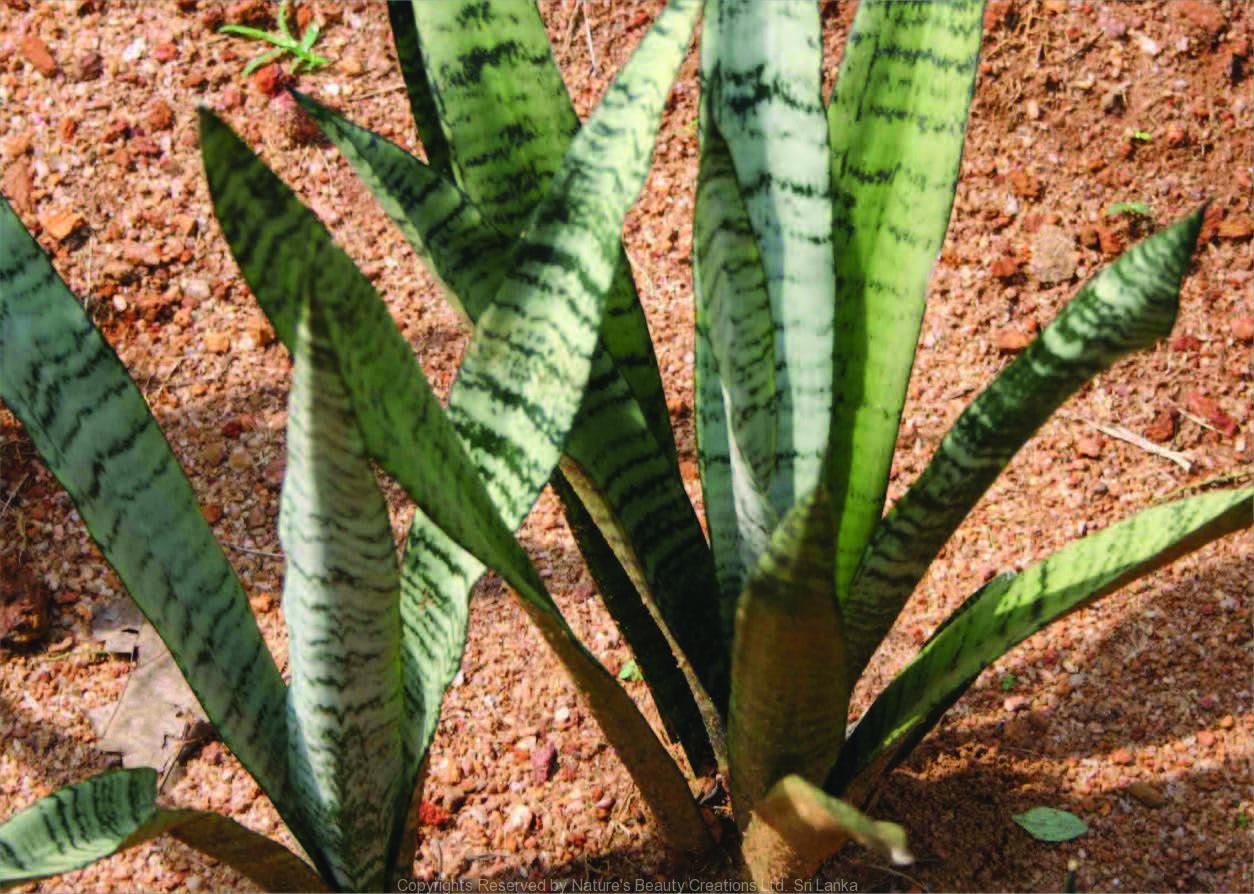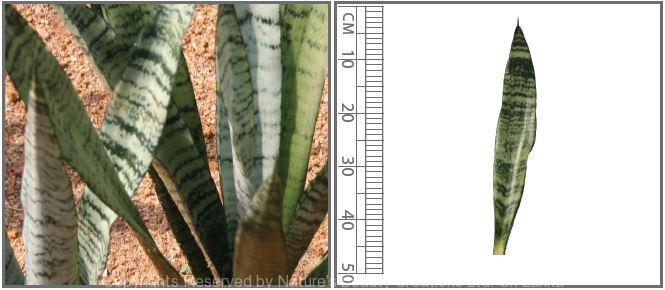

Traditional Knowledge
Useful plant parts :
Leaf and rhizome
Uses in traditional medicine :
- One table spoon of leaf juice is taken for mildly to moderately poisonous snake bites in Sri Lanka
- Fresh rhizome ground in luke warm water is used to treat cough and cold
Scientific Research
Chemical constituents:
Spirostan sapogenins: ruscogenin, its derivatives and sansevierigenin, steroidal saponins and pregnane glycosides from whole plant
Bioactivity :
Ethanol and aqueous extracts of plant: analgaesic, antipyretic; ethanol extract of leaves: antiallergic, antianaphylactic
Clinical:
References : Anbu, J. S. et al., (2009), Analgesic and antipyretic effects of Sansevieria trifasciata leaves, Afr J Tradit Complement Altern Med, 6(4), 529-33. Andhare, R. N. et al., (2012), Evaluation of antiallergic and anti-anaphylactic activity of ethanolic extract of Sanseveiria trifasciata leaves (EEST) in rodents, J Ethnopharmacol, 142(3), 627-33. González, A. G. et al., (1972), New sources of steroid sapogenins—XIV: 25S-ruscogenin and sansevierigenin, two new spirostan sapogenins from Sansevieria trifasciata, Tetrahedron, 28(5), 1289-1297. Mimaki, Y. et al., (1996), Steroidal saponins from Sansevieria trifasciata, Phytochemistry, 43(6), 1325–1331. Mimaki, Y. et al., (1997), Pregnane glycosides from Sansevieria trifasciata, Phytochemistry, 44(1), 107–111.
Copyrights Reserved By
Natures Beauty Creations



